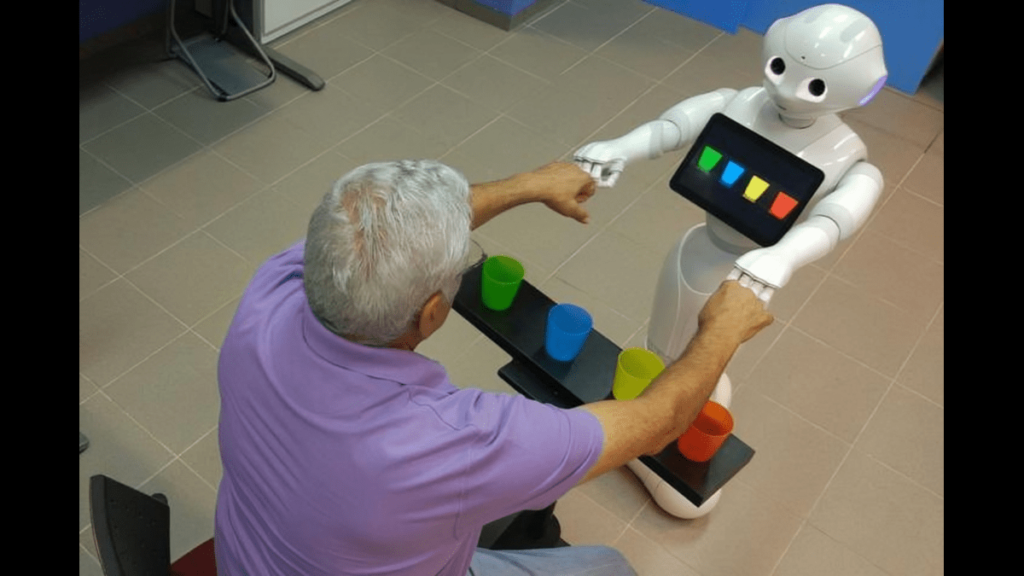
Table of Contents
Age Tech, also known as ElderTech, Gerontech, or SilverTech, refers to technology designed to meet the needs and preferences of older adults, with a focus on including them in the design process. It encompasses a wide range of digital technologies and assistive devices aimed at improving the lives of aging individuals. This can include anything from care coordination apps to smart devices tailored to the specific challenges and experiences of older adults.
As the global population continues to age, Age Tech also spelled as AgeTech is becoming increasingly important in addressing the unique requirements of this demographic. The Age Tech Association serves as a global trade organization for Age Technology, supporting companies in the industry. The field is also characterized by a growing market and increasing interest from technology companies and investors.
The Silver Tsunami – Addressing the Needs of Our Ageing Population Through Technology
The world is witnessing unprecedented growth in the number and proportion of elderly people. Declining fertility rates and increasing life expectancy have led to a global population that is rapidly greying. It is estimated that by 2050, the global population of adults aged 65 years and older will outnumber children under the age of 5.
This “Silver Tsunami” comes with both opportunities as well as significant challenges, especially when it comes to providing adequate care and support for the elderly. Fortunately, advancements in technology and especially Artificial Intelligence are enabling innovative solutions to address these gaps in elderly care.
The Rise of AgeTech – Technology Tailored for Elderly Needs
AgeTech refers to technology designed specifically to assist and empower senior citizens. It includes a broad range of solutions catering to the unique needs and preferences of the elderly – from robotics and artificial intelligence to health tech and smart home devices. The global AgeTech market is expected to grow into a $30 billion industry by 2025.
At the forefront of AgeTech growth is the adoption of Artificial Intelligence (AI) – computer systems capable of performing tasks normally requiring human intelligence. AI is playing an invaluable role in filling gaps in elderly care worldwide. Let’s explore some of the key applications of AI making a difference.

Socially Assistive Robots – Friends in Need
Socially assistive robots (SARs) are AI-powered machines designed to provide assistance to elderly individuals through social interactions. They not only provide physical support, reminders and home automation assistance to the aged, but also alleviate issues like social isolation and loneliness.
SARs such as ElliQ and Cutii leverage machine learning algorithms to better engage the elderly through conversations, activity recommendations, active listening and facial/emotion recognition. Such specialized AI can especially benefit seniors experiencing cognitive decline or paralysis due to stroke or accidents.
Additionally, the rich data captured by SARs allow elderly care providers to gain better insight into senior health needs in real time. This enables quick, preventative healthcare measures benefitting both patients and overburdened care systems.
Age Tech – Revolutionizing Accessibility for the Disabled
AI also holds immense potential for revolutionizing accessibility and independence levels for elderly disabled individuals reliant on support for basic, everyday functions. Mind-controlled wheelchairs, robotic prosthetics and wearable exoskeletons are just some of the ways technology is empowering people with limited mobility.
Artificially intelligent bionic body parts can now replicate and even augment human motor functions. Computer vision and deep learning allow assistive devices like smart glasses to serve as artificial vision for the visually impaired. Such innovations demonstrate how AI-powered assistance could soon enable the elderly disabled to regain control over their lives.
Here are some of the potential ways that AI can assist the Disabled Seniors
Socially Assistive Robots (SARs) can significantly improve the lives of people with disabilities especially the elderly ones in various ways:
- Practical Assistance: SARs can provide practical assistance to people with disabilities, making their world more accessible. They can help with mobility, daily tasks, and even allow them to socialize using robotic avatars and assistive automobiles.
- Rehabilitation and Therapy: SARs, such as exoskeletons, can aid in walking and rehabilitation processes. They adapt to the body’s movements through intelligent algorithms and can help physiotherapists with patients suffering from motor and cognitive disabilities.
- Prosthetics: Robotics coupled with Brain Computer Interface (BCI) has led to bionic hands, arms, and legs that connect to nerves. The most innovative ones already transmit sensations, such as the cold and warmth of objects touched.
- Education: Social robots can help teach social and educational skills to students of all abilities, including those with attention deficit hyperactivity disorder, hearing impairments, Down syndrome, and autism.
- Emotional Support: Beyond practical assistance, robots are emerging as companions, offering social interaction and emotional support. These assistive companions contribute to mental well-being by alleviating feelings of isolation and fostering a sense of connection.
These are just a few examples of how SARs can assist people with disabilities. The field of assistive robotics is continually evolving

Here are some of the SARs products currently available in the market
Socially Assistive Robots (SARs) are designed to assist users through social interaction. Here are some examples:
- Paro: A cuddly baby harp seal robot.
- MiRo: A puppy/bunny-like robot.
- Jibo: A personal home assistant robot.
- iCub: A humanoid robot testbed for human cognition and AI.
- Nao: A humanoid robot.
- TIAGO and Lio: SARs that address tasks through socially interacting with people.
These robots are used in various fields such as education, healthcare, and personal assistance, providing support and companionship to users. They are designed to interact with people in a way that feels natural and intuitive, often using gestures, speech, and other forms of communication. They can be customized to the particular needs of the user and can adapt and change as the user does. They play a significant role in fields like elderly care, child education, and therapy.
Mental Wellbeing in Old Age with the help of AI
The wide gamut of AI innovation in aged care aims to provide the elderly ongoing opportunities for healthier, more engaged and independent living. Elderly care facilities worldwide are recognizing the potential of AI companionship tools in countering issues like depression and dementia among senior residents while decreasing caregiver fatigue.
Studies show AI-based memory aids help strengthen the deteriorating memory circuits of dementia patients while social robots stimulate engagement and psychological well-being in withdrawn individuals. Such assistive technology enables customized elderly care plans tailored to individual physical, mental and psychological needs.
Age Tech Market Size and what the future holds in the AI Age
Industry reports predict the global aged care market to be worth nearly US$10 trillion by 2026. AI is expected to drive a significant portion of growth of Age Tech, with projections of a $9 billion market for AI in elderly care by 2024. Tech innovators are recognizing the wide range of possibilities in developing AI tools for senior assistance.
Government organizations and health authorities also acknowledge the need to incorporate such technological interventions into mainstream elderly care. Countries such as Singapore and the UAE are leading drives towards national AI strategies with aged care focuses on enhancing diagnostics, personalization and accessibility for the fast-growing senior demographic.
Overall, the future looks promising for enhancing the lives of both the aged as well as their caregivers through artificial intelligence. With longevity reaching unprecedented levels today, such specialized technology will be pivotal in enabling greater self-reliance and dignified ageing. As demographic shifts steer countries towards increasingly elderly populations, adopting Age Tech to address basic human needs could benefit entire societies.



